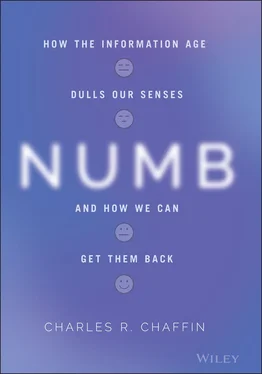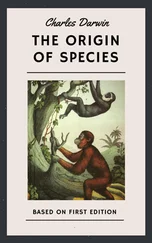The notion of novelty when it comes to new information also impacts how it is shared across social media. Researchers at MIT examined 126,000 news stories over the course of an 11‐year period. Using a variety of fact‐checking groups, they were able to determine which of those stories were true and which were false. Controlling for bots (automated software that can tweet and retweet information), they were able to determine that false news spread much faster than real news. The false news consisted of topics from politics to urban legends to a host of other categories. Actually, false stories were 70% more likely to be retweeted than true stories, with true stories taking six times as long to have the same penetration as false news. As the researchers state, “When information is novel, it is not only surprising, but also more valuable, both from an information theoretic perspective in that it provides the greatest aid to decision‐making, and from a social perspective in that it conveys social status on one that is ‘in the know’ or has access to unique ‘inside’ information.” Being the first to share new information is important, whether it is a media conglomerate or individual retweeting on Twitter. We see the implications of the spread of this false news with the increased presence of conspiracy theories and unfounded narratives, each of which impact the country's political and social discourse.
How much do we actually engage with what we engage? According to Chartbeat, 55% of readers spend 15 seconds or less on a page. The average video watch time is 10 seconds. Obviously, these data reinforce the notion that we have short attention spans. However, it also causes us to question how informed we actually are regarding the news. As Sundar points out, “I think the public are more aware now than before of public figures and major events, but this awareness does not necessarily mean they are better informed. Since they are constantly drawn to eye candy coming at them from various directions, their attention is easily diverted. Therefore, they are less likely than previous generations to process the issues underlying the news stories in an effortful, let alone systematic, manner. And, even if they are willing to engage deeply with an issue, mainstream news media do not provide them that gratification.” So there might be an element of awareness among the general public regarding the main issues and current events of the day, but the breadth of understanding of these issues may be limited. Media sources are tracking clicks and engagement time of viewers to encourage them to have more sensationalized content on the front ends of stories and videos to keep viewers engaged.
With the vast amount information that comes from various media sources, we actually have difficulty addressing all the information that is available to us. In 2018, 58% of Americans said that it was actually becoming more difficult to stay well‐informed. That same survey from Gallup found that Americans are having increasing difficulty in sorting out facts relative to bias. Having a basic understanding of current issues without deep knowledge can also make us more susceptible to influences from social media. A similar Pew study in 2020 found that Americans who get their news primarily through social media tended to be less engaged and knowledgeable than individuals who got their news from other sources. Over the course of nine months, respondents were asked a series of 29 fact‐based questions ranging from COVID‐19 to economics to basic political questions. The group who got the least number of questions correct was those who relied upon social media for their news. Contrarily, those who followed social media for their news also tended to be more aware of unproven claims about COVID‐19 or even conspiracy theories (such as individual people intentionally created COVID‐19). It is important to note that the average age of these users skewed younger (with 48% of respondents between 18 and 29). However, it does highlight many of the elements of filter bubbles and confirmation bias that exist within social media, particularly if individuals are receiving their news via sharing from others. What are their friends and connections on social media saying when they are sharing this news? Similar to a clickbait headline, their statement while sharing the news could have a major impact on the perception of the reader even if the content of the story and the statement do not match. When it comes to social media, not only could the content of the story be biased, but the person delivering the biased story could also be biased!
We are drawn to bad news. Many, if not all of us, say that there is too much bad news in TV and print today, but we are still drawn to it. Researchers at McGill University asked participants to select news stories to read for what they thought was an eye‐tracking study. They were told to select whichever stories they liked, positive or negative, and read them carefully for the purpose of the eye‐tracking study. They found that participants were drawn to the negative news far more than the positive news, even though they said that they preferred positive news. Kalev Leetaru used sentiment mining, a technique that analyzes the nature of text, whether positive or negative, on New York Times articles between 1945 and 2005, as well as a variety of other news sources from 130 countries between 1979 and 2010. Outside of the influence of major news events, the tone of the stories progressively became more negative, beginning in the 1960s. Although there were a few periods, such as the 1980s, where the stories became a bit more positive, the overall trend over the past several decades has been towards events and even tone that highlights threats, suffering, and controversy. As Sundar says, “The saying goes, ‘If it bleeds, it leads.’ This has been a mantra for even traditional newspapers and local TV channels for several decades now.”
The tiny part of the brain called the amygdala kicks into gear anytime we may sense danger. It is our warning signal when we might see a snake, a fire, or anything else that might be perceived as a threat. When the amygdala senses information that might indicate danger, it can increase heart rate and breathing, essentially activating hormones that prepare you to fight or flee. The amygdala is really important for our survival; think about centuries ago when we saw a wild animal approach us. The amygdala automatically activates our fight or flight response, triggered by emotions such as fear, anxiety, or anger. Regarding the news, the amygdala senses danger when it hears of bad news – even it that danger is far away, it draws our attention towards it. It can be difficult for that part of our brain to distinguish the difference between a real threat and one that is on a screen in front of us. Even though the rest of our body helps us rationalize, nevertheless the amygdala helps direct our attention towards bad news. Media sources take advantage of this by bringing more graphic videos, sensationalism, and breaking news (with that “doomish” music and the serious announcer voice: THIS IS BREAKING NEWS!).
Over time, regular exposure to negative news, and all of the sensationalism that accompanies it, gradually desensitizes viewers to the point of needing more and more outrageous, sensational, fear‐evoking content to keep them engaged. This is an entertainment industry. In order to keep your attention, news outlets need to continue to push the envelope on our emotions to get a rise out of an increasingly numb consumer base. As we will discuss in a later chapter, this desensitizing of the viewer also has implications when it comes to compassion fatigue. Watching vivid images or hearing specific stories of horrific events on a daily basis that are sensationalized for the purpose of high viewership ratings can impact our ability to be compassionate towards victims of the events we regularly view. Whether explicitly or not, we can start to see bad events as normal or mundane, limiting our ability to respond to them in some tangible way.
Читать дальше












